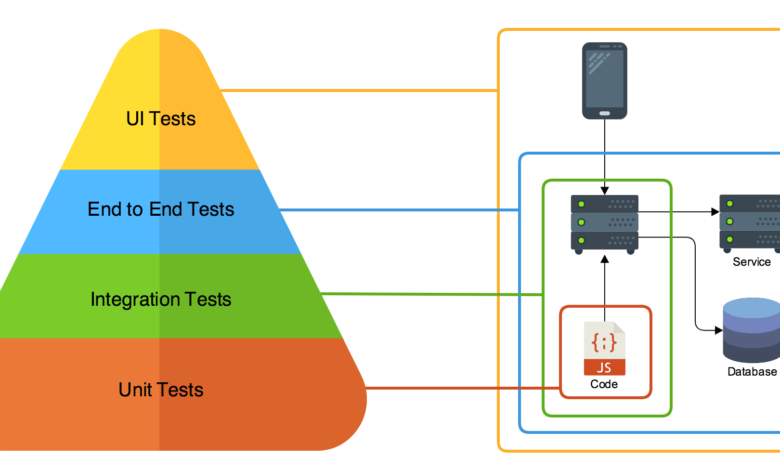Integration Testing Example in a Microservices Architecture

In software development, microservices architecture is a prevalent approach to building scalable and flexible systems. However, managing the integration between multiple services can be complex, especially when different components rely on one another. This is where integration testing becomes essential. It ensures that all parts of the system work as expected, both individually and together.
In this blog, we’ll walk through a practical integration testing example in the context of microservices architecture. By the end of this post, you’ll have a clear understanding of how integration testing fits into microservices and how to implement it in your projects.
What is Integration Testing in Microservices?
Integration testing verifies that different services in a microservices architecture communicate and work together correctly. Unlike unit testing, which focuses on individual functions or methods, integration tests ensure that services interact as expected, passing data between them seamlessly.
In a microservices architecture, where various services (e.g., databases, APIs, user interfaces) are loosely coupled, it’s easy for minor issues to arise between services. Integration testing helps catch these issues early, reducing the risk of problems in production.
To dive deeper into integration testing and its importance, check out this practical integration testing example.
Why is Integration Testing Crucial for Microservices?
When working with microservices, multiple services interact with one another, often through APIs, databases, or message queues. Each service is responsible for a specific task, but they rely on each other to deliver the final output.
Without proper integration testing, issues can arise due to:
- Service Communication: Microservices often communicate with each other via APIs or message queues. Without testing, there could be communication breakdowns or data inconsistencies.
- Data Integrity: With data flowing between multiple services, it’s essential to ensure that the data remains intact and is correctly processed.
- Failure Scenarios: Since services are independent, failure in one service can affect others. Integration testing helps simulate and detect these failure scenarios, allowing developers to address them proactively.
Integration testing bridges the gap between unit tests and end-to-end tests, ensuring that all parts of your application function as expected when combined.
How to Conduct Integration Testing in a Microservices Architecture
Here’s a simple step-by-step guide to conducting integration testing in a microservices environment:
- Identify the Services to Test: First, determine which services need to interact with each other for the test to be successful. For instance, you can test the interaction between your order service and payment service.
- Define Test Scenarios: Create test cases that simulate real-world interactions between services to ensure seamless integration and interoperability. These tests should cover both everyday scenarios (such as processing an order) and failure scenarios (such as a payment failure).
- Set Up a Test Environment: Prepare a test environment that mirrors your production setup. This might include using mock services, databases, and APIs, or you could opt to test with real services in a staging environment.
- Run the Tests: Execute the integration tests to observe how the services interact with each other. Look for data flow issues, API errors, and other failures that could arise.
- Analyze and Fix Issues: After running the tests, analyze the results to identify any issues that arose during service interactions. Debug and resolve issues to ensure the services function as expected.
Practical Integration Testing Example
Let’s explore a practical integration testing example in a microservices architecture, focusing on an e-commerce platform that includes a shopping cart service, an order service, and a payment service.
Example Scenario
Imagine you’re working on a shopping cart feature where a customer adds items to their cart, and the system processes the order and handles payment. Here’s how you could implement integration testing for this scenario:
- Identify the Services to Test:
- Shopping Cart Service: Manages the products added to the cart.
- Order Service: Processes the order by verifying product availability and creating an order.
- Payment Service: Handles payment processing.
- Define Test Cases:
- Verify that adding items to the cart correctly updates the backend database.
- Test that the order service successfully receives the cart details and creates an order.
- Verify that the payment service processes the payment correctly and marks the order as paid.
- Set Up the Test Environment:
- Use a staging environment that mimics production, including a mock payment service and a test database.
- Use actual APIs for the order and cart services, but mock the payment service to simulate real-world conditions.
- Run the Tests:
- Add items to the cart via the shopping cart service and verify that the order service receives and processes this data correctly.
- Simulate a successful payment through the mock payment service and ensure that the order is processed correctly and the payment is marked as successful in the database.
- Test failure scenarios, such as an invalid payment method, and verify that the system handles them correctly (e.g., by rolling back the transaction or showing an error message).
- Analyze and Fix Issues:
- Once the tests are complete, look for any issues with the data flow or error handling. Resolve any problems that could impact the customer experience or lead to system failures in production.
Best Practices for Integration Testing in Microservices
- Use Automation: Automating integration tests is crucial for streamlining the testing process. Integrating tests into your CI/CD pipeline ensures that each new update is automatically validated, reducing the chances of introducing new bugs into the system.
- Test with Realistic Data: Use data that mirrors real-world conditions, such as valid, invalid, and edge case inputs. This helps identify problems that only arise in production.
- Isolate Components: While it’s essential to test how services interact, isolating individual components where possible can make it easier to identify and resolve issues. Mocking external APIs or services can help avoid disruptions during testing.
- Run Tests Continuously: Ensure that integration tests run regularly as part of your CI pipeline, you can catch integration issues early in the development process. This proactive approach reduces the likelihood of delays before deployment, providing you with the assurance that your systems are always reliable.
Conclusion
Integration testing plays a vital role in a microservices architecture. Simulating real-world interactions between different services helps uncover issues that might not be evident in unit testing. Following a structured approach, as demonstrated in our practical integration testing example, ensures that your microservices work seamlessly together and can scale without issues.
To streamline your integration testing process, learn how Hypertest can help optimize your tests, catch bugs, and automatically debug root causes.




